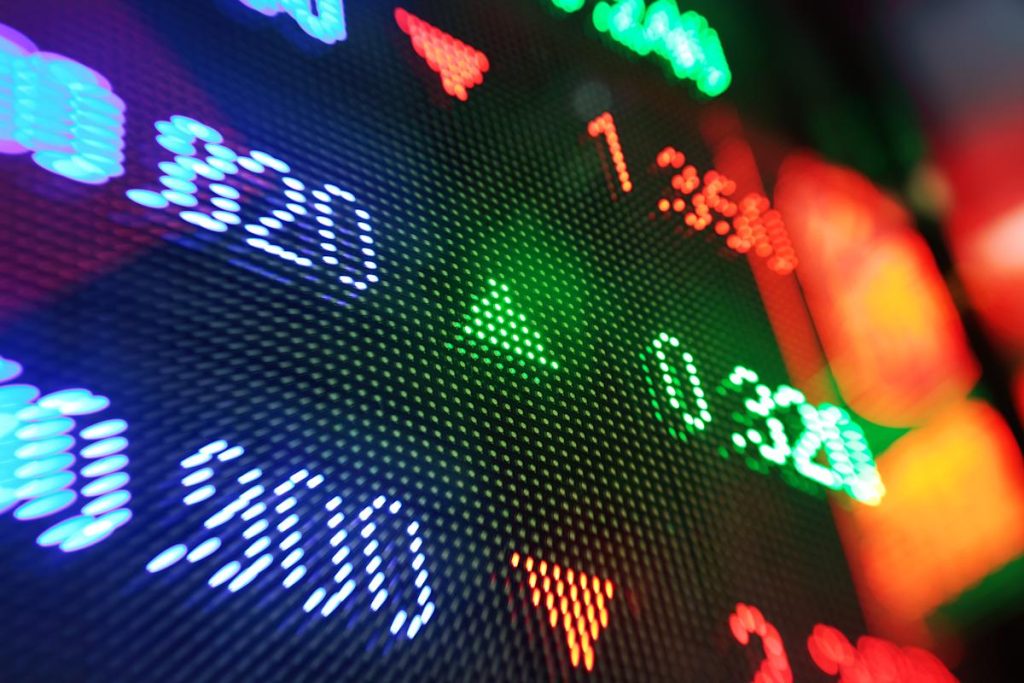
If you’re interested in trading stocks, you need to know what time the stock market opens.
The stock market opens at 9:30 a.m. ET Monday through Friday and closes at 4 p.m. ET, with a few exceptions. When you hear that the stock market is open, it means that trading is in session on the two major U.S. stock exchanges, the New York Stock Exchange (NYSE) and the Nasdaq.
The stock market is closed for 10 major holidays in 2025. The market also closes early at 1 p.m. on three days immediately before or after holidays.
While official stock market hours are 9:30 a.m. to 4 p.m., that’s not the only time you can trade stocks. A growing number of brokerages allow you to buy and sell stocks outside of regular trading sessions during extended trading hours.
Learn more: Is the stock market open today?
You’re generally afforded more protections when the stock market is open than you get during extended hours. Many brokerages also restrict the types of orders and trades you can make outside of regular market hours. When the stock market is open, you can expect the following:
-
Real-time price quotes. The U.S. Securities and Exchange Commission (SEC) requires exchanges to provide consolidated stock quotes and trading data during market hours. But during extended hours, markets aren’t linked. You may not be able to find accurate, up-to-date quotes or wide disparities for a single stock quote on two different trading platforms.
-
Orders executed at the best price available. Brokerages are required to use the National Best Bid and Offer (NBBO) and fulfill orders at the best price available during market hours. But NBBO doesn’t apply outside of trading sessions. Since trading platforms aren’t linking data, you won’t know if you’re getting the best price.
-
Protections from extreme volatility. If a single stock price plummets, exchanges can put trading its shares on hold. But if stocks as a whole (as measured by the S&P 500 or Russell 1000 indexes, for example) tank dramatically during trading hours, exchanges will pause trading for anywhere from 15 minutes to the rest of the trading day, per SEC rules. For example, trading was halted several times during the COVID-19 stock market crash in 2020. No such volatility protections exist outside of normal market hours.
-
You’ll face fewer broker restrictions. When the stock market is open, you can usually place whatever type of order you like. But outside of market hours, many brokerages restrict you to limit orders, where you put an upper limit on what you’re willing to pay for shares or a minimum price at which you’re willing to sell. Many brokers also don’t allow options trading or buying and selling of fractional shares outside of market hours.
Learn more: How to start investing: A 6-step guide
When the stock market is open, there are a few more things you can expect:
-
More liquidity. Liquidity refers to how quickly you can buy or sell shares. Liquidity is high when the stock market is open, meaning you can usually find a willing buyer or seller if you place an order at the market price. That’s because most trading occurs during market hours.
-
Less volatility. Because investors often trade in response to news that’s released before or after trading hours, volatility tends to be high during extended hours. The lack of transparent price information contributes to volatility.
-
Tighter bid-ask spreads. Orders filled while the stock market is open tend to have narrow bid-ask spreads, which is the difference between the highest amount someone is willing to pay (the “bid”) and the lowest price at which someone is willing to sell (the “ask”). The bid-ask spread widens when the stock market is closed because fewer trades are happening and there’s less pricing information.
Learn more: Create a stock investing strategy in 3 steps
The closing bell marks the end of trading hours each day at 4 p.m. Trading doesn’t completely grind to a halt when the closing bell sounds, as extended trading hours make it possible to buy and sell stocks outside of normal market hours.
The two primary extended trading windows are:
-
Pre-market trading session: 7 a.m. to 9:30 a.m. ET (some pre-market trading starts as early as 4 a.m.)
-
After-hours trading session: 4 p.m. to 8 p.m. ET
Many brokers now offer access to overnight trading between 8 p.m. and 4 a.m. ET, as well.
Shortly before 4 p.m. each trading day, a closing auction (known as a “closing cross” for the Nasdaq) matches buyers and sellers for the final trades of the day. Usually, this period is marked by a flurry of trading activity.
Closing share prices are recorded at 4 p.m. for both exchanges. These prices are used to calculate daily closing values for stock indexes like the S&P 500 (^GSPC), Nasdaq Composite (^IXIC), and Dow Jones Industrial Average (^DJI).
Learn more: What is a financial advisor, and what do they do?
Extended trading begins immediately after the stock market closes.
Companies tend to release earnings and other major announcements outside of trading sessions. Several closely watched government reports, like the monthly unemployment report from the U.S. Bureau of Labor Statistics, are released before the stock market opens.
Many investors take advantage of extended trading to trade on big news in real time. Not surprisingly, what happens between the closing and opening bells often sets the stage for what happens when the stock market opens.
Learn more: Robo-advisor: How to start investing right away
Opening prices are based on an opening auction similar to the one that occurs when the market closes each day.
Ultimately, share prices are determined by supply and demand for any particular stock. However, since the stock market often reacts to the news of the previous evening or pre-trading hours, trading activity tends to spike immediately after the opening bell.
Trading activity usually slows down midday before picking up again right before the stock market closes.
Not all brokerages allow you to trade during extended trading hours, so you’ll need to check with your trading platform about its rules. However, FINRA rules require that brokers inform customers about the risks of trading outside of normal market hours.
Due to the volatility, absence of real-time price information, and lower liquidity associated with extended trading, it’s usually best to trade while the stock market is open. While trading outside of normal market hours may be convenient and allow you to react to big swings in stock prices, trading when the stock market is open is usually safer, especially if you’re a beginning investor.
The 10 a.m. rule for stocks is a guideline some traders follow that states that a stock’s price is usually set for the day by 10 a.m., a half-hour after the stock market opens. Some traders refrain from making trades before 10 a.m. due to the typical early morning volatility.
Yes, the U.S. stock market is open the Friday after Thanksgiving, aka Black Friday. However, trading hours are shortened. The stock market opens at 9:30 a.m. as usual, but closes at 1 p.m.
This article was edited by Tim Manni.



